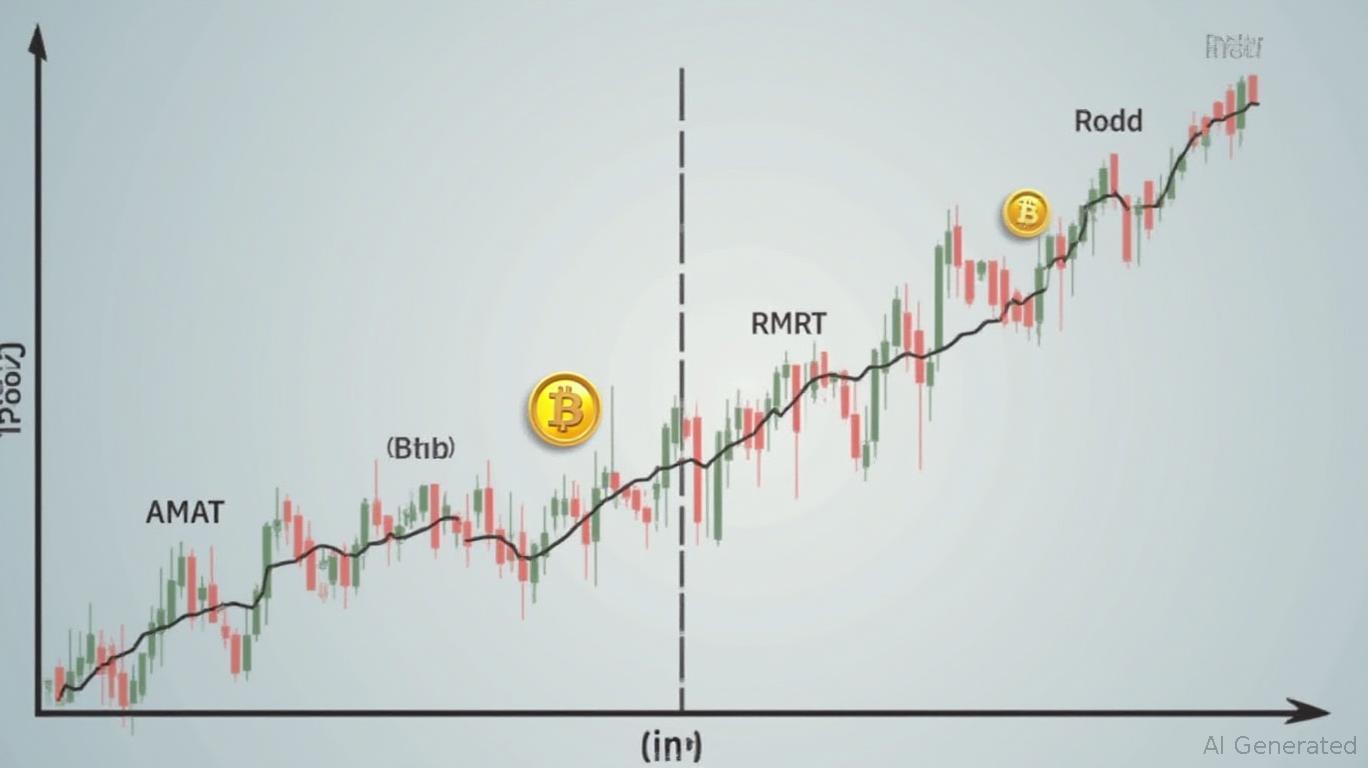Fed Rate Cuts and Crypto's Next Bull Run: Seizing Opportunities in the Inverse Correlation
The Federal Reserve's monetary policy has long acted as a gravitational force on global markets, and its upcoming rate cuts could now be the catalyst to unlock a new crypto bull run. The inverse correlation between cryptocurrency prices and Federal Reserve interest rates has never been clearer. As the Fed pivots toward easing, capital flows could shift decisively into risk assets like Bitcoin (BTC), especially if geopolitical factors and institutional adoption align. Let's dissect how traders are positioning for this shift and where to look for opportunities.
The Inverse Correlation: Fed Rate Cuts Fuel Crypto's Rally
Historically, cryptocurrencies thrive when the Fed pauses or cuts rates. The 2022–2023 bear market coincided with aggressive Fed hikes, while the 2024 rebound began as rate increases slowed. Today, the CME FedWatch Tool estimates an 88% chance of at least two rate cuts by year-end 2025, with a 60% probability of an initial cut in September. This dovish outlook is already pricing into crypto markets.
The
is straightforward: lower rates reduce borrowing costs and increase liquidity, incentivizing investors to seek higher returns in risk assets. For crypto, this dynamic is amplified by its status as a competing store of value to traditional assets like bonds. If the Fed's cuts materialize, expect capital to flow into Bitcoin's $104K resistance zone—a key psychological level from its 2021 peak—and beyond.The $2.4M Trader Bet: A Microcosm of Market Sentiment
While the Fed's stance is bullish for crypto, not all markets are equally optimistic. A $2.4M put option bet on Applied Materials (AMAT)—a semiconductor giant—reveals a nuanced picture. The trade, targeting a drop below $170 by September 2025, reflects lingering concerns about stagflation and sector-specific risks.

Yet, this bearish bet in one sector underscores broader market caution—precisely the environment where crypto's asymmetric upside shines. While AMAT's traders fear a tech slowdown, Bitcoin's decentralized, inflation-resistant nature offers a hedge. The AMAT trade also highlights timing: the September expiration aligns with the Fed's projected rate-cut timeline, suggesting traders are pricing in macroeconomic shifts.
Technical Levels: $104K as a Catalyst for Bitcoin's Next Move
Bitcoin's $104K range is a critical battleground. Historically, this level marked a 2021 peak and a 2023 resistance point. A sustained breakout here could signal a resumption of the 2024 rally, which saw Bitcoin rise 120% after ETF approvals and Fed easing expectations.
Technical indicators like the RSI and MACD suggest Bitcoin is consolidating before a breakout. Institutional inflows into Bitcoin ETFs—already up 20% YTD—could provide the fuel. The $104K level isn't just a number; it's a psychological barrier that, once cleared, could trigger a self-reinforcing cycle of buying.
Institutional Momentum and Regulatory Tailwinds
Institutional adoption is no longer a myth. The 2024 Bitcoin ETF approvals and the GENIUS Act's progress on stablecoin regulation have reduced regulatory uncertainty. Meanwhile, Ethereum's Pectra upgrade—enhancing UX and staking efficiency—could narrow the gap between its market cap and Bitcoin's.
These developments, paired with the Fed's expected cuts, create a perfect storm for institutional capital to pour into crypto. The $1.5B loss at ByBit in early 2025 serves as a reminder of volatility, but also underscores the need for regulated platforms—a trend the Fed's actions could accelerate.
Geopolitical X-Factor: Trump's Tariffs and Inflation
President Trump's election has introduced a wildcard: tariff rollbacks. If enacted, reduced trade barriers could slash input costs for industries like semiconductors (hence the AMAT put bet's timing) and lower inflation. A Fed less pressured to combat inflation via rate hikes would then cut rates faster, further boosting crypto.
Conversely, if tariffs remain, stagflation risks could prolong uncertainty. Here, crypto's deflationary design (e.g., Bitcoin's fixed supply) becomes a refuge.
Investment Strategy: Aggressive Allocation Ahead of Cuts
The Fed's September meeting is the next critical pivot point. Investors should:
1. Buy the dip at $104K: Use the AMAT put expiration (September 19) as a catalyst to accumulate Bitcoin if it holds the $100K floor.
2. Diversify into Ethereum: The Pectra upgrade and staking-friendly ETFs (if approved) make ETH a strong second pillar.
3. Hedge with stablecoins: Tether (USDT) and USD Coin (USDC) provide liquidity amid volatility.
4. Monitor Fed communication: The “dot plot” at June's FOMC meeting will refine expectations—adjust allocations accordingly.
Conclusion: The Fed's Pivot is Crypto's Green Light
The inverse correlation between Fed policy and crypto prices is undeniable. As rate cuts loom, Bitcoin's $104K resistance and Ethereum's innovation offer entry points into a potential bull cycle. The $2.4M AMAT bet reminds us that macroeconomic risks remain, but for investors willing to seize the Fed's dovish turn, the rewards could be historic.
The question isn't whether crypto will rise—it's whether you'll be positioned to ride the wave.
Disclaimer: Crypto markets are volatile. Always conduct due diligence and risk assess before investing.

Comments
No comments yet